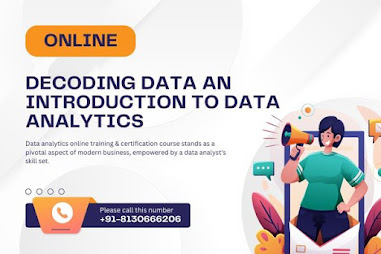The proliferation of digital information continues to surge, with estimates from a Forbes article suggesting that each second brings an additional 1.7 megabytes of new data as of 2020. This expansion of digital data is transforming our existence, increasingly becoming a cornerstone of our daily routines. As the volume of digital information grows exponentially—typically doubling every couple of years—its significance in our lives and our reliance on it are at an all-time high. The trajectory of our future is closely intertwined with the paths that this vast sea of data will carve out.
In the world of commerce, data is more than just a buzzword—it's an integral part of day-to-day operations. Companies harness data for a myriad of applications, such as conducting consumer research, crafting lucrative marketing campaigns, and refining their strategies. The myriad benefits of data, however, can only be reaped through meticulous analysis. This is where the crucial role of data analytics emerges. When armed with the right tools and expertise, data analytics empowers businesses to thrive and expand.
Our forthcoming exploration into the realm of Data Analytics online training by Multisoft Virtual Academy will delve into its essence, chart its progression, delineate its various forms, outline the analytical process, and prognosticate its trajectory into the future.
What is Data Analytics?
- Data collected directly from customers by the business itself is known as first-party data.
- Second-party data refers to information that a business acquires from another entity that originally compiled that data.
- Aggregated data is data that a business purchases from a collective source or data marketplace.
The Transformation of Data Analytics from Past to Present
Past
- Roots in Statistics: The lineage of data analytics is deeply intertwined with the history of statistics, which dates back to ancient times when it was used for governmental planning and taxation, particularly in the compilation of censaries.
- Emergence with Technology: Technological progress has significantly influenced the adoption of data analytics. A pivotal moment was in 1890 when Herman Hollerith developed the "Tabulating Machine," dramatically accelerating the U.S. Census process of that year, reducing its completion time to a mere 18 months.
- The Rise of Data Mining: The 1990s witnessed the advent of data mining, a critical development in analytics involving the extraction of patterns from extensive datasets. This marked a shift from conventional analytic techniques to more sophisticated, efficient methodologies.
- Google's Impact: The advent of Google's search engine represented a monumental leap in data analytics, enabling the rapid analysis and processing of vast amounts of data with greater automation, scalability, and performance.
Present
- Modern Data Processing: In the current landscape, Python and R dominate the realm of data analytics. These open-source platforms have become integral due to their compatibility with big data infrastructure and visualization technologies. R is often the choice for exploratory analysis and statistical modeling, while Python is favored for developing analytic applications.
- Advancements in Predictive Analytics: Cutting-edge techniques in data analytics now include methods like Random Forests, Matrix Factorization, TensorFlow, and Simulated Annealing, which are employed by data scientists and organizations for sophisticated predictive modeling.
- Embracing Visualization: The trend towards utilizing open-source visualization technologies like D3.js and Angular is gaining momentum among businesses. Factors influencing this move include cost-efficiency, customization capabilities, aesthetic value, and interactive features.
Types of Data Analytics
Descriptive Analytics
- Gathering data
- Processing data
- Analyzing data
- Visualizing data
Diagnostic Analytics
- Spotting anomalies or deviations in the data.
- Collecting data that pertains to these anomalies.
- Applying statistical methods to discern patterns and relationships that explain the anomalies.
Predictive Analytics
- Neural networks
- Decision trees
- Regression analysis
Prescriptive Analytics
Top application of Data Analytics
- Security
- Transportation
- Fraud and risk detection
- Delivery logistics
- Customer interactions
- Real-estate and city planning
- Healthcare
Who is a Data Analyst?
- Producing reports that detail business trends, patterns, and forecasts derived from data analysis.
- Collaborating with data engineers and programmers to refine decision-making protocols, system improvements, and the development of data management strategies.
- Crafting documentation to help stakeholders understand the analysis process.
- Applying statistical tools to scrutinize and interpret data.
- Extracting data from primary and secondary sources.
Role of Data Analyst
- It unveils hidden insights from data that are then assessed to align with business objectives.
- It involves creating reports from gathered data for the teams that need this information.
- It enables market analysis to be conducted, providing insights into competitors' strengths and weaknesses.
- It enhances customer satisfaction by deepening the understanding of their needs.
Skill set required
- Proficiency in data extraction and preparation for subsequent analysis.
- Competence in conducting data analysis to discover interesting trends and correlations.
- Solid grounding in probability and statistics.
- Expertise in data visualization techniques.
- Effective writing and communication capabilities.
- The ability to develop dashboards and reports for business use.

